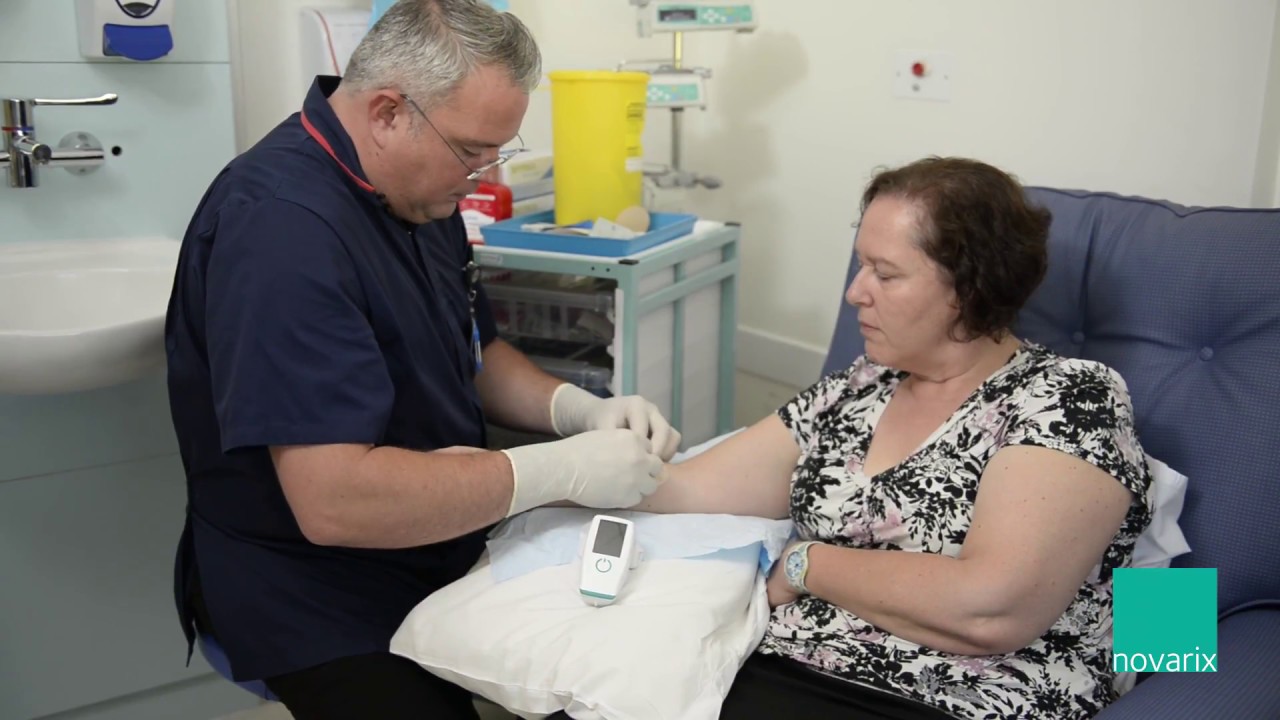The IV-eye is a portable device that uses infrared to view veins on patients arms. We’ve been using the IV-eye for coming up to four years now. We use them mainly in oncology, at the moment for patients that require repeated cannulation in peripheral veins, on the back of the hand and forearm. The thing I like most about the IV-eye you is that you can visualize veins really easily and the new version has a colour feature which means the veins are even clearer, and you’ve got the background of green and a vein that looks blue, so you get a much sharper image.
The thing I like about the IV-eye is that it’s portable, it’s easy to use and it’s also reliable, and I can visualize the vein more easily. It saves me time because I can easily cannulate on the first attempt. The benefits of using the IV-eye over the ultrasound is that I can visualize superficial veins at the back of the hand when I’m using the paediatric cannulas with for example chemotherapy patients, because they are superficial the ultrasound won’t be able to visualize them because there’s not enough tissues, and with the IV-eye because you can view superficial veins it’s easy to put a line in. We use IV-eye as part of our assessment of patients when we are going to cannulate them. So we’d use IV-eye to look at the vessel health, look at blood refill, the quality of the vein before we decide to place a cannula, or it could be that we then move on to a different technology.
There’s lots of work going on around vessel health and preservation from the IPS, and certainly lots of national guidelines in vascular access now are looking at using technology and devices to select the best vessel, for the best device, at the right time. When we think about patient groups who benefit most using IV-eye we think about patients with poor peripheral vascular access, who have had repeated vascular access attempts in the past, that naturally lends itself to cancer chemotherapy oncology patients who have had previous difficulty with cannulation. So we may use it on the patients back of the hand, forearm, where we want to place a 24 gauge paediatric cannula, so that the flow rate can be adjusted to the vessel size. So those patients benefit really well from using IV-eye. Bariatric patients, patients with dark pigmentation skin, because the infrared technology means that we can see directly into the vein, it doesn’t matter what the pigment of the skin is. Our patients that we use the IV-eye on are chemotherapy patients, which means they have very poor veins, so cannulation is very problematic. Chemotherapy damages the veins which makes them harder to palpate, which is why we use the IV-eye to be able to locate the veins.
When using the IV-eye it makes the patient feel less anxious about the cannulation process, and it enables the person cannulating to be able to cannulate first time. The IV-eye is a great option for vessel assessment and it’s really easy for staff to use. My top tips for the use of IV-eye would be making sure you and the patient are comfortable during the assessment process, placing the patient’s arm in a good position, if possible on the top of a pillow so that the IVeye can rest safely on top of the patient’s arm or the back of the hand, wherever you’re using the device, so that you can then assess the patient’s arm with and without a tourniquet. In some cases you can use the IV-eye in real time, and if you’ve got a nice strong length of vessel, you can insert the cannula just before the device where the light shines, but you must make sure that you put a sterile probe cover of some description over the IV-eye.
The IV-eye can improve patient and clinical outcomes because it does exactly what it says on the box, it finds the vein, it’s quick to find the vein and then you can easily insert the cannula or take a blood sample once you’ve located the vessel. It’s a very good tool for vessel health and assessment, and again that can save time and money because you’re not having to repeatedly cannulate the patient in a vein that is inappropriate for cannulation..
Read More: Heart transplantation
